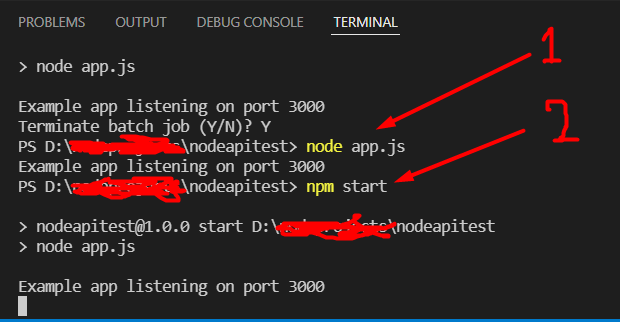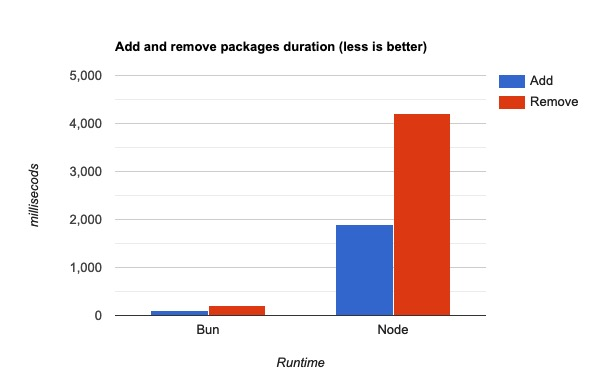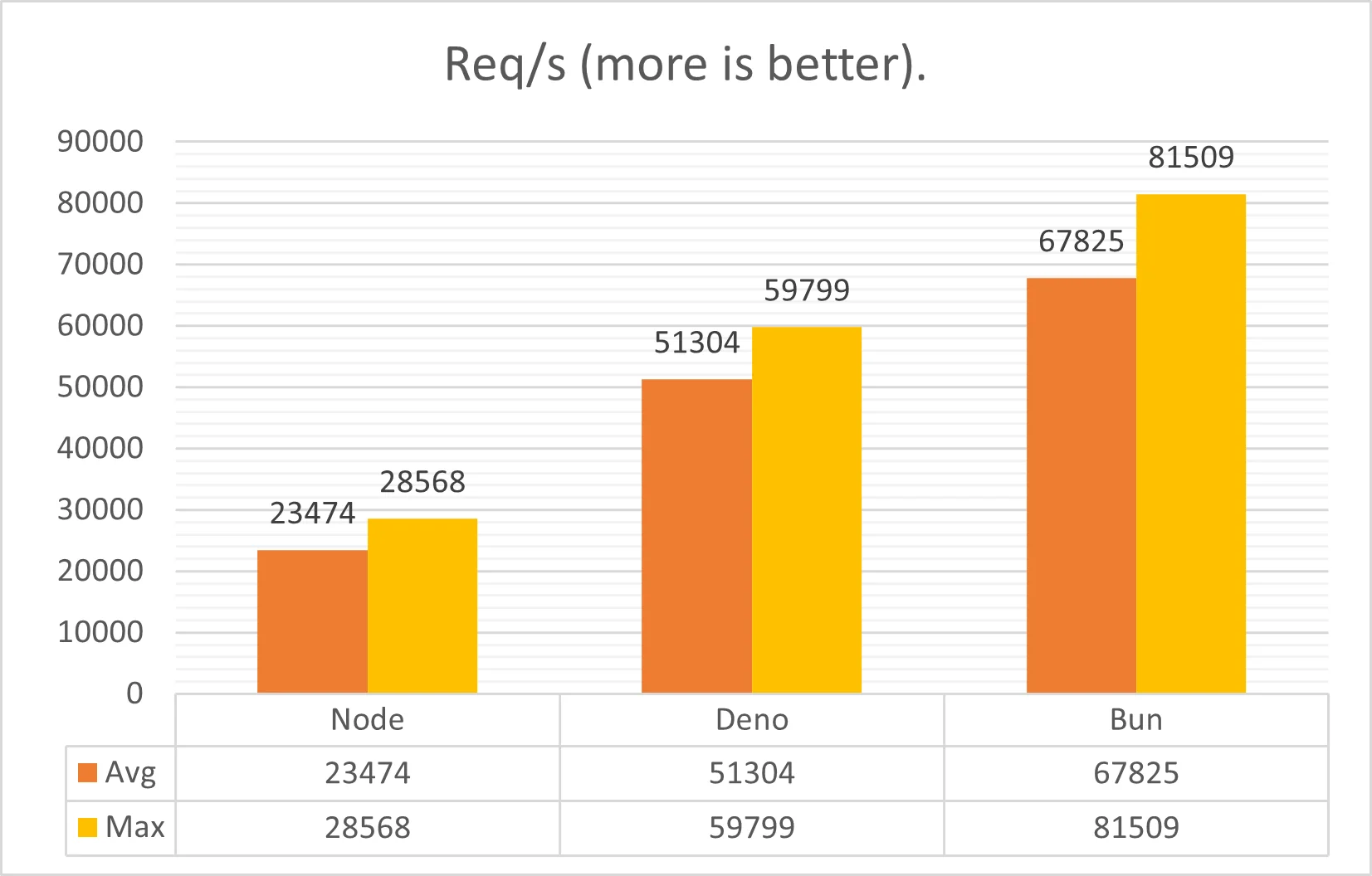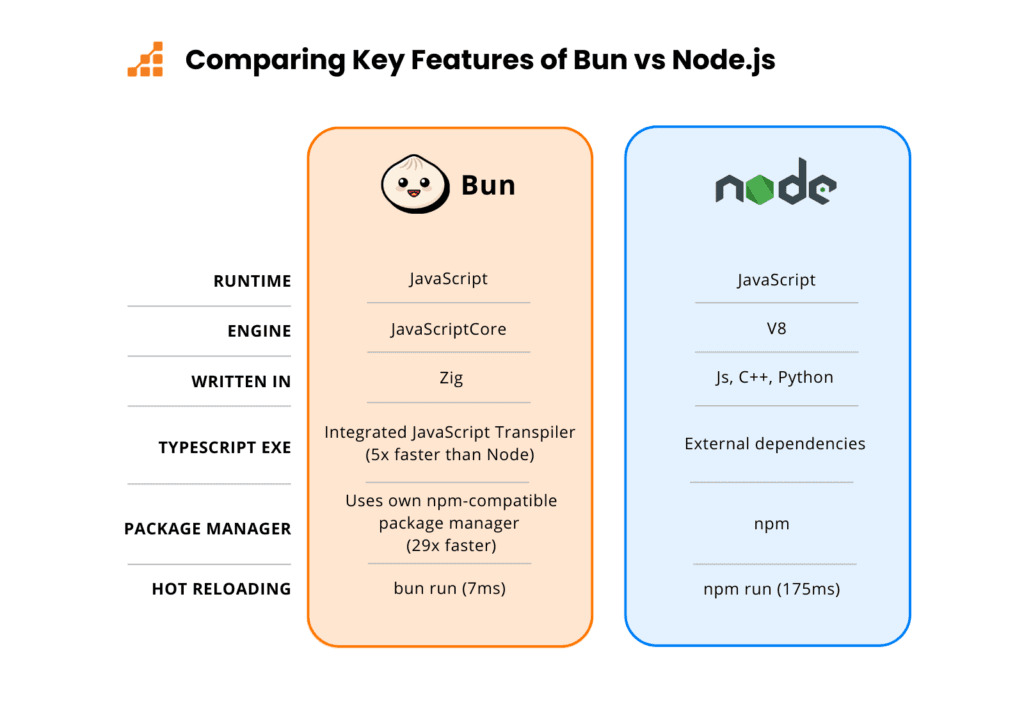
Bun vs. Node.js: Performance Showdown in 2025
Explore the performance battlefield of Bun and Node.js in 2025, comparing startup times, HTTP server capabilities, and memory usage. Find out which JavaScript runtime might be best for your next project and why the choice matters.
Bun vs. Node.js: Performance Showdown in 2025
With the rapid evolution of JavaScript runtime environments, developers often find themselves choosing between the well-established Node.js and emerging alternatives like Bun. As we step into 2025, a Bun vs Node.js performance comparison 2025 is crucial for those seeking an optimal environment for their applications. This detailed comparison will help you navigate the nuances of each, focusing on startup time, HTTP server performance, memory usage, and more.
Introduction to Bun and Node.js
Node.js has long been the standard for JavaScript on the server-side, known for its event-driven architecture and robust ecosystem. However, Bun, a newer entrant, promises improved performance and a better developer experience due to its modern design principles.
Startup Time Comparison
Startup time is a critical factor in environments like serverless computing. In this Bun vs Node.js startup time comparison, Bun often shines due to its lean runtime and simplified dependency model. Node.js, while not sluggish, may lag slightly as it loads extensive modules during boot.
Recent benchmarks in 2025 indicate that Bun's optimized runtime significantly reduces startup times, which could lead to cost savings in pay-per-duration services.
Bun: Advantageous in scenarios requiring quick setups, like serverless functions.
Node.js: Reliable but potentially slower depending on module dependencies.

HTTP Server Performance
Both Bun and Node.js offer robust tooling for HTTP servers. However, when analyzing Bun vs Node.js HTTP server performance, Bun's architecture may provide a slight edge. Early 2025 benchmarks demonstrate Bun’s ability to handle higher request rates with low latency.
That said, Node.js remains a versatile option due to its mature libraries and community support, making it suitable for scalable solutions where absolute peak performance is not a constraint.
Memory Usage Analysis

Efficient memory usage is vital for application scalability. A Bun vs Node.js memory usage analysis shows that Bun, designed with memory optimization in mind, often consumes less memory, which can be crucial for microservices architecture.
Nonetheless, Node.js applications can achieve comparable memory efficiency through careful management and the utilization of robust garbage collection mechanisms.
File I/O Performance
For applications reliant on disk operations, Bun vs Node.js file I/O performance can be a deciding factor. Bun’s architecture allows for faster file processing due to its streamlined approach and use of modern APIs.
Node.js, with its non-blocking I/O design, is no slouch either; though it may require optimization strategies to match Bun's raw read/write speeds.
Package Management Speed

Package management efficiency affects project setup times and development speed. Recent Bun vs Node.js package management speed studies suggest Bun’s package manager, built from scratch, provides quicker installation and updates.
Node.js’s npm, however, remains feature-rich and robust, offering a vast repository and strong backward compatibility, attributes that are significant for legacy support.
Real-World Application Performance

In a Bun vs Node.js real-world application performance scenario, Bun often outperforms in specific tasks due to its speed-oriented design. However, Node.js retains a competitive edge in projects requiring extensive library support and community-driven solutions.
Developers might find Bun more suitable for new applications aiming for the highest efficiency, while Node.js could be preferred for applications needing ecosystem support and proven stability.
Developer Experience in 2025
The Bun vs Node.js developer experience 2025 is nuanced. Bun is praised for its modern tooling and faster iteration cycles. Its newcomer status presents a learning curve, but it also offers an opportunity for developers to engage with contemporary practices.
Conversely, Node.js offers a tried-and-true ecosystem enriched by mature documentation and widespread usage a comfort zone for many developers.
Compatibility with Existing Projects
When considering Bun vs Node.js compatibility with existing projects, Node.js’s established ecosystem allows smoother transitions due to extensive third-party library support and backward compatibility.
Bun, while supporting JavaScript standard libraries, may require additional adjustments, particularly in projects heavily reliant on specific Node.js modules.
Ecosystem Growth in 2025
Monitoring Bun vs Node.js ecosystem growth 2025 is key for technology adoption decisions. Node.js’s vast ecosystem is a powerhouse, with consistent contributions and innovations from the community.
Bun’s ecosystem, though smaller, is rapidly growing, attracting developers for its forward-thinking design and performance perks. Expect continuous enhancements as Bun matures.
Suitability for Serverless Functions
The Bun vs Node.js suitability for serverless functions discussion highlights Bun’s advantages in scenarios demanding fast execution and minimal latency. Node.js, however, is widely supported across serverless platforms, offering flexibility and configurability for a range of functions.
Key Takeaways

Bun: Offers impressive performance in startup time, HTTP processing, and memory usage, making it ideal for cutting-edge applications aiming for peak efficiency.
Node.js: Boasts a mature ecosystem and compatibility, favored for projects requiring comprehensive library support and stability.
While both Bun and Node.js have their strengths, the choice depends on project-specific needs. STEM Link offers various bootcamps that cover full-stack development, including courses that delve into optimizing these popular technologies. Consider enrolling in our full-stack engineering or AI-driven RAG/LangChain bootcamps to master these skills.
You may also like
The Complete Guide to Best AI Models, Model Pricing & Real-World Applications
Navigate the complex LLM landscape with our comprehensive guide. Understand model selection, pricing structures, and real-world applications tailored for developers, teams, and professionals while making informed AI decisions that save money without compromising quality.
The Complete Software Engineer Roadmap 2026: From Zero to Hired in 8 Months (No Degree Required)
This roadmap has placed 250+ complete beginners into software engineering roles in 2025 via [STEM Link](https://stemlink.online/products/bootcamps)**, bypassing the traditional path entirely. No CS degree required. No algorithms PhD needed. No leetcode grinding for 2 years.
Cloudflare Meltdown Again: 20% of The Internet Is Down alongside Notion & LinkedIn
Cloudflare has a global service disruption that took nearly 20 percent of the internet offline. Millions of users were suddenly met with 500 Internal Server Errors, and major platforms stopped responding. Essential services such as npm, LinkedIn, Stack Overflow, Canva, Claude, Perplexity, and Clerk all went down at the same time, creating a chain reaction across the digital world.


